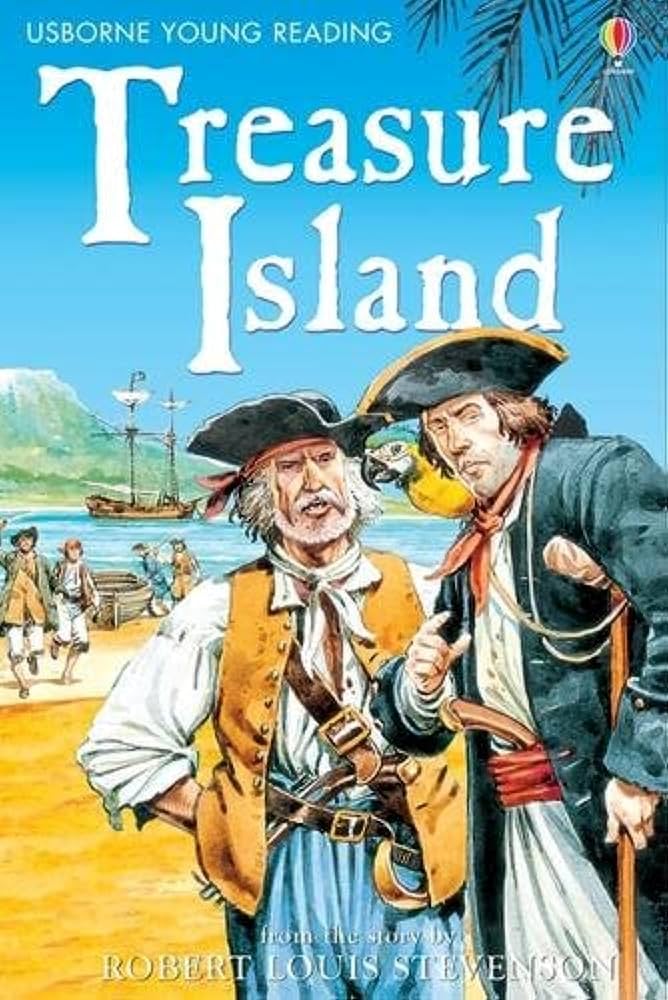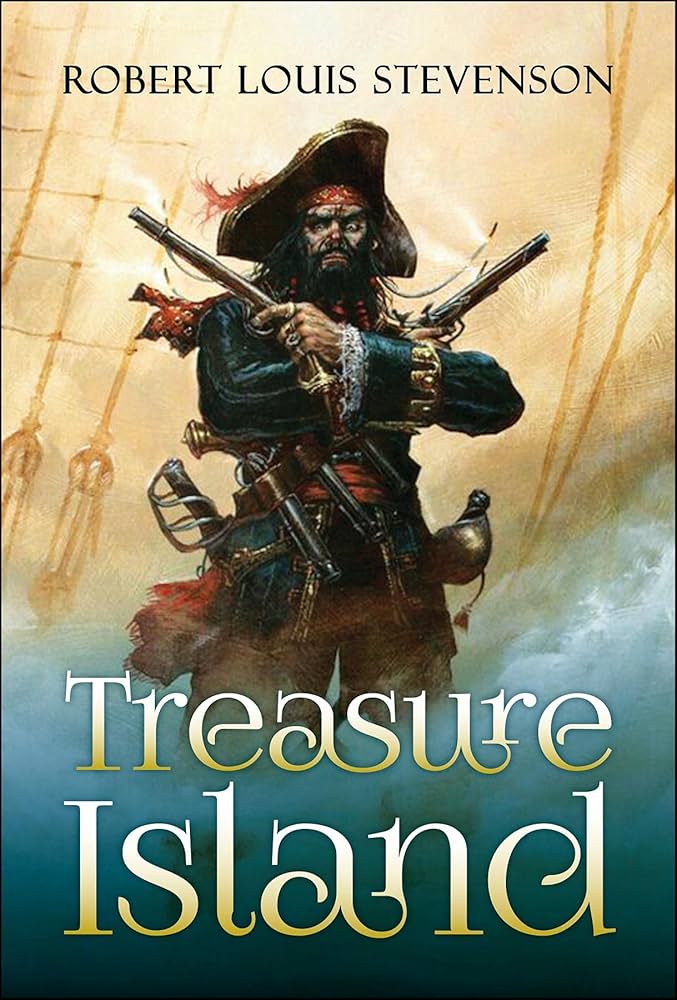Treasure Island: A Deep Dive into Robert Louis Stevenson's Classic

Robert Louis Stevenson’s Treasure Island stands as a cornerstone of adventure literature, captivating readers of all ages for over a century. Its enduring popularity stems from a compelling narrative, memorable characters, and a lasting cultural impact that continues to resonate today. This article explores Treasure Island through various lenses, examining its literary merit, authorial background, educational value, historical context, and broader cultural influence.
A Literary Masterpiece: Genre, Style, and Themes
Treasure Island, while often categorized as children’s literature, transcends simple genre classifications. Its elements of adventure, mystery, and swashbuckling action appeal to a broad audience, while its nuanced characters and exploration of moral ambiguity provide depth for adult readers. Stevenson masterfully employs a narrative structure that blends first-person accounts with third-person omniscience, enriching the reader’s experience and creating suspense. The story unfolds through the perspective of young Jim Hawkins, allowing readers to vicariously experience the excitement and danger of the treasure hunt.

Stevenson’s writing style is characterized by its vivid descriptions, evocative language, and skillful use of dialogue. The nautical terminology and sea shanties authentically transport the reader to the world of 18th-century piracy. His prose is both accessible and engaging, seamlessly blending adventure with psychological depth, particularly in the portrayal of Long John Silver, a complex character whose charm masks a ruthless ambition.
The novel explores several significant themes, including the allure of adventure, the clash between good and evil, the nature of loyalty and betrayal, and the corrupting influence of greed. Jim Hawkins’s journey is one of self-discovery as he navigates the treacherous world of piracy and confronts the moral complexities of his companions. The contrast between the idealized romanticism of adventure and the harsh realities of piracy is a central tension within the narrative.

The Enduring Appeal of Treasure Island
The book’s enduring appeal lies in its ability to transport readers to a vivid and exciting world. Stevenson’s descriptions of the sea, the island, and the characters are so detailed and evocative that they create an immersive reading experience. The mystery surrounding the treasure, the suspenseful plot twists, and the dynamic interactions between the characters keep readers engaged from beginning to end. The classic elements of buried treasure, a seafaring adventure, and a cast of memorable pirates have secured its place in the cultural imagination.
Robert Louis Stevenson: Authorial Background and Inspirations
Robert Louis Stevenson, a Scottish novelist, poet, and essayist, was a prolific writer whose works continue to be celebrated for their originality and imaginative power. His life, marked by ill health and extensive travels, deeply influenced his literary output. His experiences in the South Seas, for example, are reflected in many of his works, providing a backdrop of exotic landscapes and cultures.

Stevenson’s Writing Process and Inspirations
Stevenson’s creative process often involved meticulous planning and revision. He carefully crafted his plots, characters, and settings, seeking to create realistic and believable worlds, even within the context of fantastical adventures. His inspirations were varied, drawing on historical accounts of piracy, personal experiences, and his keen observation of human nature. He also drew inspiration from other literary works, blending elements of classic adventure tales with psychological insights into his characters’ motivations.
The genesis of Treasure Island is fascinating. Originally conceived as a game to entertain his stepson, the story gradually developed into a full-fledged novel. Stevenson’s own fascination with pirates and his skill in crafting exciting narratives contributed significantly to the book’s success. The blend of adventure, mystery, and psychological depth is evident throughout the story, marking it as one of his most significant and enduring achievements.
Educational Value and Life Lessons from Treasure Island
Beyond its entertainment value, Treasure Island offers significant educational potential. Its rich vocabulary, detailed descriptions, and nuanced characterizations provide opportunities for language acquisition and critical thinking skills development.
Life Lessons Embedded in the Narrative
The novel provides a rich tapestry of life lessons. The protagonist, Jim Hawkins, learns valuable lessons about courage, resourcefulness, loyalty, and the dangers of unchecked ambition. He faces numerous moral dilemmas and learns to distinguish between true friendship and opportunistic alliances. Long John Silver’s character serves as a cautionary tale, illustrating how the pursuit of wealth and power can corrupt even the most charming individuals.
Treasure Island encourages readers to think critically about the complexities of human behavior and the consequences of their choices. The challenges faced by the characters, both physical and psychological, provide ample opportunities for discussions about perseverance, ethical decision-making, and the importance of loyalty and integrity. The themes of adventure and exploration can inspire a sense of curiosity and a desire for self-discovery.
Treasure Island in Libraries and Archives
Treasure Island holds a prominent place in libraries and archives worldwide. Its various editions, translations, and adaptations showcase its enduring popularity.
Preservation and Access to the Novel
Public libraries provide widespread access to the novel in various formats, including print, ebook, and audiobook versions. Digital libraries have expanded access globally, enabling readers to easily access and engage with the story. Rare collections and archives often contain original manuscripts, early editions, and related archival materials, providing valuable insights into Stevenson’s life and creative process. These resources help preserve and make accessible the legacy of Treasure Island for future generations of readers and scholars.
The Cultural Impact of Treasure Island
Treasure Island has had a profound and lasting impact on popular culture. Its influence extends far beyond the literary world, shaping perceptions of pirates, adventure, and the human condition.
Adaptations, Awards, and Communities
The novel has been adapted countless times for film, television, theatre, and other media, each interpretation reflecting the story’s enduring appeal. It has garnered numerous awards and accolades over the years, further cementing its status as a literary masterpiece. Online communities and fan groups dedicated to Treasure Island demonstrate the continued engagement and enthusiasm surrounding the story. Its influence on popular culture is widespread, shaping perceptions of pirates, treasure hunts, and maritime adventure for over a century. The iconic image of Long John Silver has become a lasting symbol in the cultural imagination.
The continuing adaptations and interpretations show the book’s versatility and ability to inspire new audiences. Its themes of adventure, morality, and the human condition remain relevant and engaging to contemporary readers. Treasure Island’s lasting cultural impact is a testament to its literary merit and its ability to resonate with generations of readers.